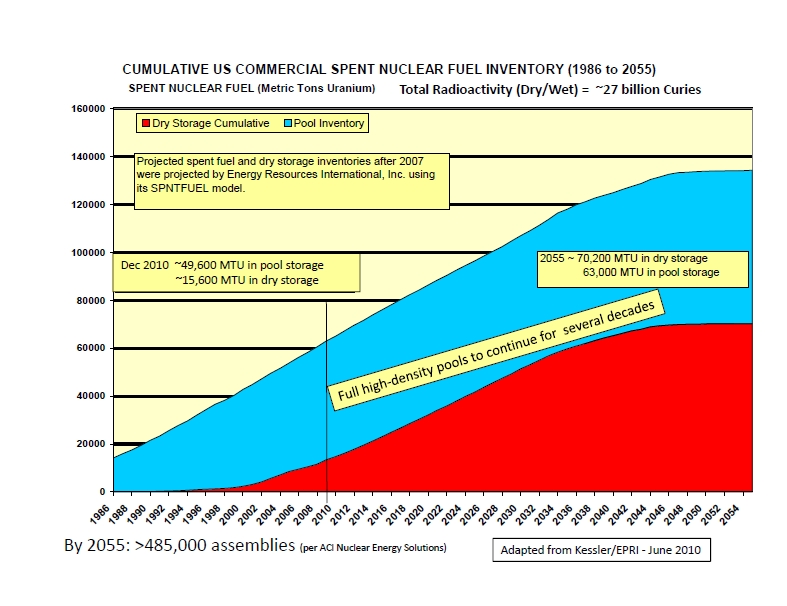From the U.S. Nuclear Regulatory Commission:
This year has seen a dramatic increase in a question people regularly ask the Nuclear Regulatory Commission: “What magnitude earthquakes are U.S. nuclear power plants designed to withstand?” The answer, however, does not include a specific “magnitude.”
The NRC requires U.S. reactors to withstand a predicted level of ground motion, or acceleration, specific to a given site. Ground acceleration is measured in relation to “g,” the acceleration caused by Earth’s gravity.
An earthquake’s magnitude, often described on the Richter scale, is an expression of how much energy the quake released. It’s not possible to transform a given magnitude alone to ground acceleration at a site. Several important factors affect the relationship between an earthquake’s magnitude and associated ground acceleration, including the distance from the earthquake, the depth of the quake and the site’s local geology (i.e., hard rock or soil). A small earthquake close to a site could therefore generate the same peak ground acceleration as a large earthquake farther away.
The NRC’s requirements call for a nuclear power plant’s design to account for ground acceleration that is appropriate for its location, given the possible earthquake sources that may affect the site and the makeup of nearby faults, etc. Existing U.S. plants were designed on a “deterministic” or “scenario earthquake” basis. In other words, examination of an area’s seismological history provides an understanding of the largest earthquake and associated ground acceleration expected at a plant site.
Later this year, the agency expects to provide existing plants a seismic analysis tool based on work related to applications for new plants, along with the latest information on earthquake sources, so that the plants can perform an updated review. Applications for new nuclear power plants have taken a “probabilistic” approach to determining seismic hazards, looking at a wide range of possible quakes from sources that could affect a given site. The NRC has spent several years examining how these newer techniques can be used to re-evaluate existing nuclear power plant sites.
























